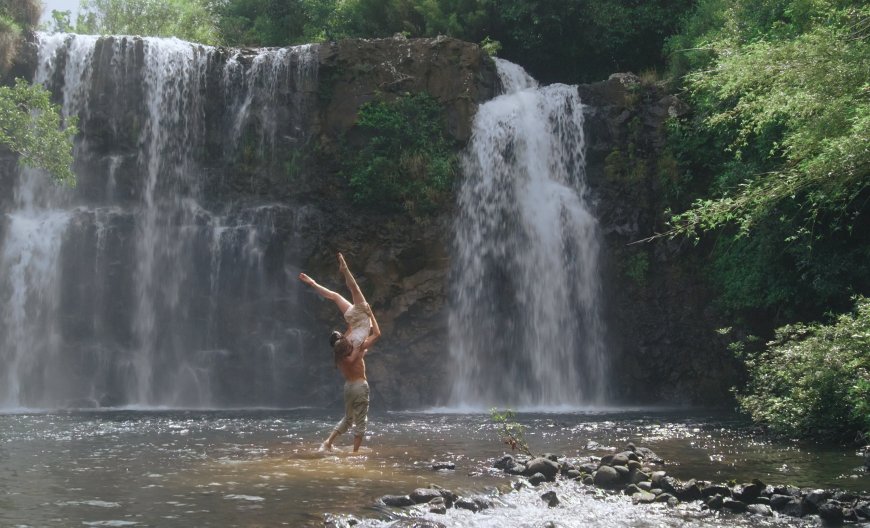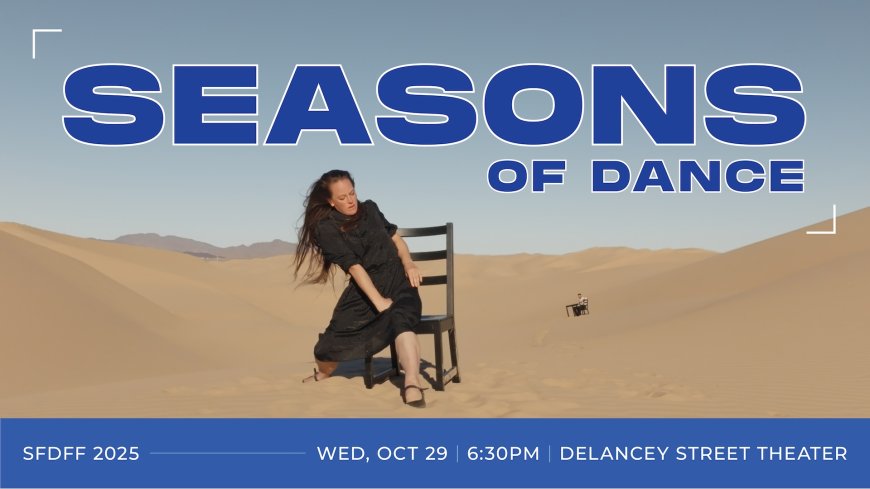
Distinguished by its size and variety, the 16th annual San Francisco Dance Film Festival (SFDFF) is coming to town Oct. 24–Nov. 11, and to the world through streaming from Nov. 10–30.
The festival schedule lists over 90 dance films and videos — feature-length documentaries, short films, live-performance captures — and 18 curated programs.
“With only days to go,” says SFDFF Executive Director Randall Heath, “you can feel the creative charge in the air — artists, audiences, and ideas all about to collide in a celebration of movement and imagination.
“When dance meets film, and artists meet audiences, something magical happens — it becomes more than a show; it becomes a shared pulse. You can feel that energy building as we get ready to launch our new season.”
The festival, already prominent a decade ago, has been growing since, even through the challenge of the pandemic.
“What began as a small, passionate effort has become a global movement — proof that dance on screen can move us, tell our stories, and connect us in a shared moment of courage and creativity,” Heath said.
Standing out among the festival’s feature films is Seasons of Dance, a cinematic journey set to Max Richter’s recomposition of Vivaldi’s Four Seasons. Each section/season is choreographed and danced by a different team, all on the theme of love and relationships
“When I started out, 12 years ago, I was often told how to film dance, and this corresponded to a very classical full-length vision of movement. That didn’t suit me, and I didn’t want to follow that advice,” said Tommy Pascal, director of Seasons of Dance. “I started to shoot instinctively, as I felt it, getting inside the bodies with close-ups. This gives the editing a new rhythm.”
Seasons opens with “Spring,” choreographed and performed by Peeping Tom, the award-winning Belgian dance and theater company founded by Gabriela Carrizo and Franck Chartier in 2000.
The company’s trademark is its hyper-realistic aesthetic, supported by the scenic design. “The choreographers create an unstable universe that defies the logic of time and space. The spectator becomes a witness — or a peeping Tom — of what is usually hidden or passed over in silence,” Pascal said.
Bobbi Jene Smith and her partner Or Schraiber are responsible for “Summer.” They met as dancers in Israel’s Batsheva Dance Company and are now in residence at the L.A. Dance Project. They are both founding members of American Modern Opera Project and together have created works for Ballet de l'Opéra National de Paris, Martha Graham Dance Company, the Royal Danish Ballet, and other companies.

Schraiber said, “When we were asked to do the summer season and to attach the word passion to it, it was an obvious choice, because our work explores a lot of themes linked to love. It seemed to fit in very well with who we are.
According to Smith, “We were very inspired to do passion in the desert, because you might normally think that passion, like the desert, is dry but passion is full of desire, heat and juice, and we like this idea that the desert represents thirst. It’s an illusion. It’s a craving and it creates the space for a craving to be satisfied.”
“Fall” is the work of brother-sister choreographers Imre van Opstal and Marne van Opstal, who had acclaimed careers as dancers with Nederlands Dans Theater and the Batsheva Dance Company.
Imre said, “There’s a sacred naturalness to this season and for me, it resonates with my own mortality. We’re always in transition, ‘on the go’ and that's something we also want to portray in this relationship between the dancers. There’s a certain sadness to autumn. It’s a moment of breakpoint, very fleeting, like a reset sandwiched between summer and winter.
“In a relationship, it's either that moment when everything falls apart and you start laughing again, or that moment when you don’t reconnect.”
“Winter” is by Émilie Leriche, a French American dancer based in Göteborg, Sweden, and Paris.
She said, “When the project was first proposed to me, it was quickly understood that we would eventually be filming this duet in the snow and with very cold temperatures. So a lot of the choreography came from a knowledge that we would need to be warm and protected and thus covered in many layers.
“As winter was proposed as the episode for separation, theְְ‘rupture’ of a couple, I found this beautiful poetry between the end of a relationship and these layers that we end up covering ourselves in at the very end.”




